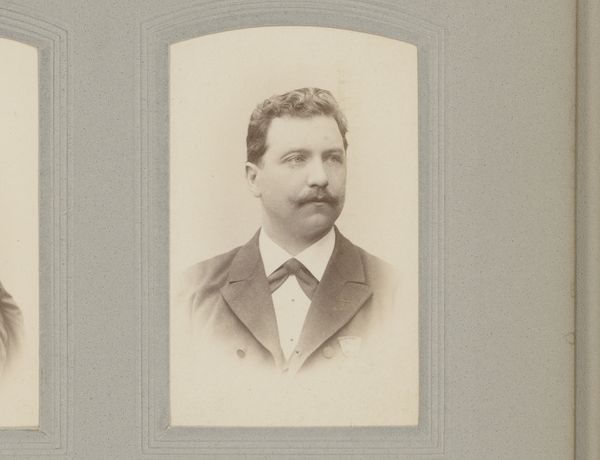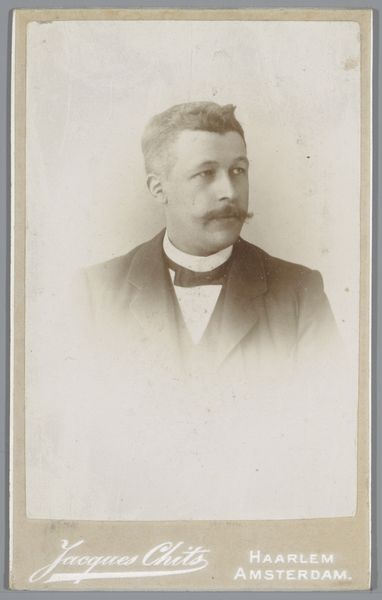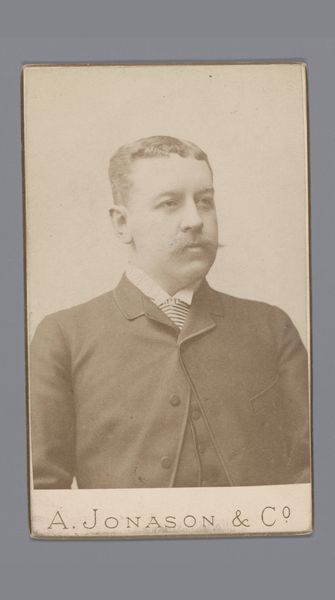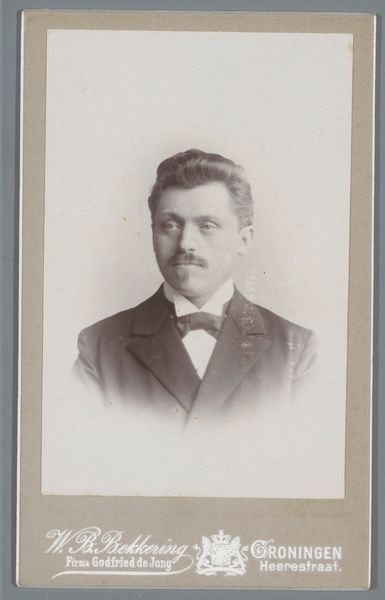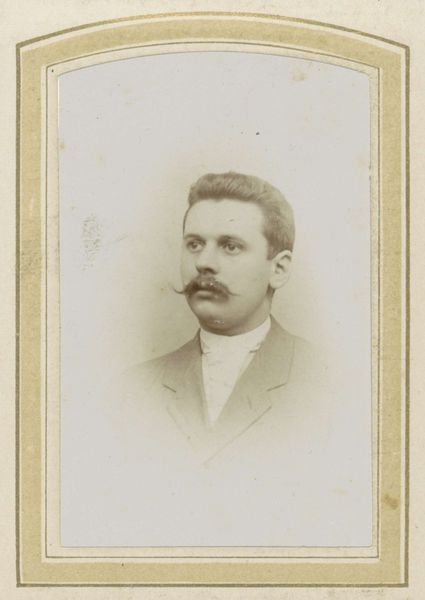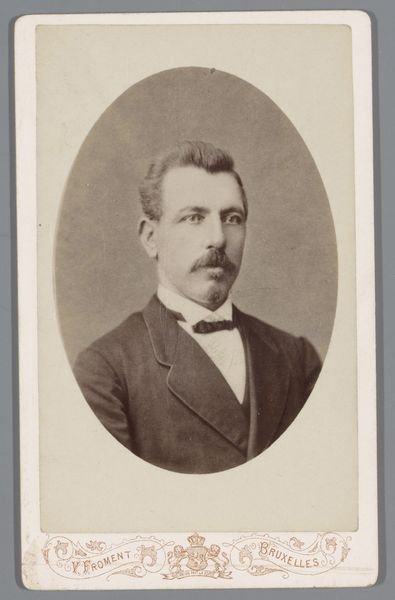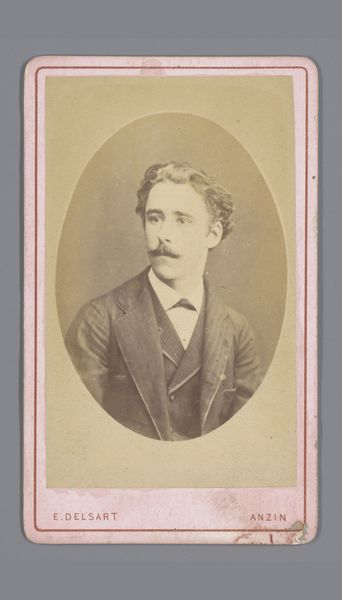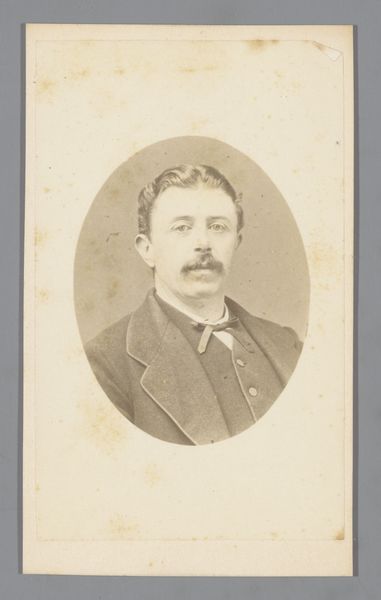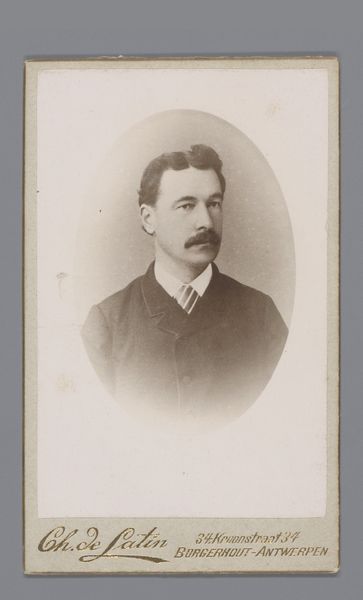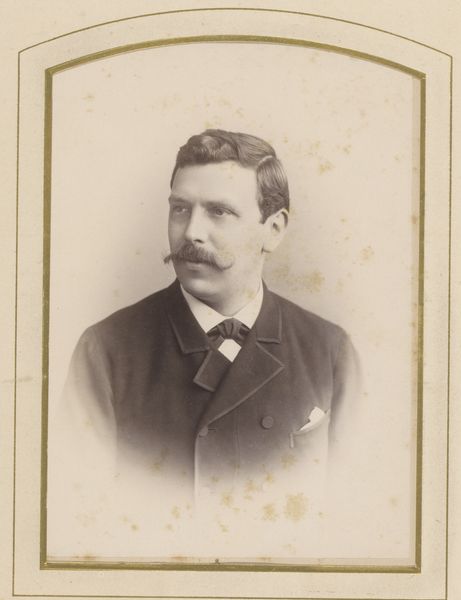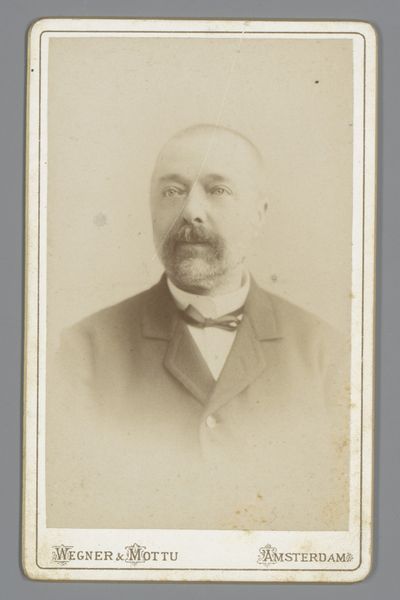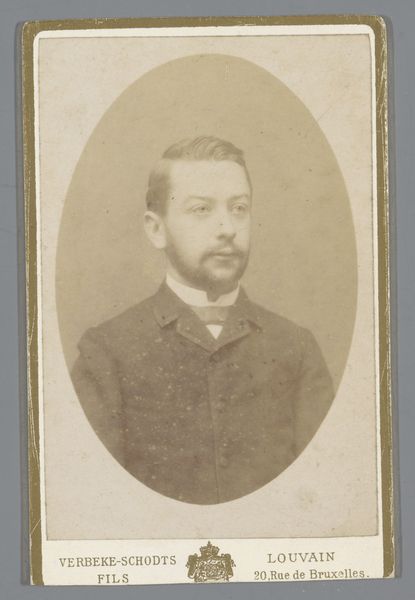
photography, gelatin-silver-print
#
portrait
#
photography
#
historical photography
#
gelatin-silver-print
#
19th century
#
realism
Dimensions: height 139 mm, width 98 mm
Copyright: Rijks Museum: Open Domain
Albert Greiner, based in Amsterdam, produced this albumen print of an unknown man, part of a carte-de-visite, during the late 19th century. The carte-de-visite emerged as a hugely popular phenomenon in the 1860s, fueled by advancements in photographic reproduction and a burgeoning middle class eager to participate in the rituals of portraiture previously reserved for the elite. These small, easily produced and traded photographs became potent signifiers of social status and personal identity. Here, the subject's neatly groomed mustache and tailored suit speak to the aspirations and self-presentation of the Dutch bourgeoisie. The photographer's imprint, "Koninklijke Hof Fotograaf" or "Royal Court Photographer," prominently displayed, further elevates the image, linking it to notions of prestige and authority. Understanding this seemingly simple portrait requires us to look at the histories of photography, class, and commerce in the Netherlands. Catalogues, trade directories, and archival records of photographic studios can provide a richer understanding of this image's historical context. Art is always contingent on social and institutional contexts.
Comments
No comments
Be the first to comment and join the conversation on the ultimate creative platform.
